Genre: Platformer Developer: Vicso Publisher: Mentrix Players: 1 Released: 1991
One day our hero, an Axel Steel/Cartman mismatch named Pyro opts for a romantic walk in a dark forest with his comely hamball. Not surprisingly in such a neighborhood, a wizard swoops in and makes off with the girl leaving him to rot in the swamp, all of this told through the lost art of eyeball animation. Wardner was originally developed by Toaplan and released in the arcades by Taito in 1987. This was the golden age of coin-op, so dense was the selection that Wardner was afforded its own sub-sub-sub-genre (that’s medieval action platforming shooter to you) along with Irem’s Legend of Hero Tonma and Capcom’s Ghosts series. A port of the game apparently landed on the Famicom, another version scrapped for PC Engine and the sole U.S. release landing on pre-Sonic era Genesis courtesy of short-lived Mentrix Software.
Pyro’s name apparently comes from his ability to lob fireballs, which could be upgraded at an item shop between rounds. Naturally you can jump, essential for reaching loot scattered around levels, being a chubby kid though you fall like a rock when attempting massive leaps. Bred for the arcades, Wardner is brutal, doling out death with a single hit, two with a scarce cape item. Toaplan’s company motto, “we will rape you for quarters” is painfully enforced. The game’s six levels follow a cartoony yet dark look characteristic of Ghouls ‘n Ghosts though lacking that title’s personable graphics.
Kids, this is not MUSHA. Third parties have done some amazing things with the Genny but there did exist a transition phase from 8 to 16-bit where plenty of fumbling occurred (see Super Hydlide). Arcade Wardner wasn’t stunning but the home port suffers resolution drop and poor use of the 64 color palette, borderline grade NES art to be precise. Backdrops are commonly black or composed of two-three colors, a single layer of scrolling marks your path in outdoor levels. Enemies tend to lack animation and be amorphously crafted. Is that an eagle or a bat? A ghoul or a bouncing hippie? Err… a drumstick with teeth? WTF? The audio is no better. The music is best described as aggravating (or someone stabbing a Casio) and the number of sound effects can be counted on one hand.
Not appealing huh? Oddly, despite the audio/visual butchery I found Wardner entertaining. I’d have to imagine the design docs for this game were the margins of a high school comp notebook. Levels are a haphazard collection of traps, enemies, and constantly changing obstacles. It’s classic platforming for the short attention span, every thirty seconds you’ll be on to a new challenge. The treasure and random oddball items around levels encourage more careful exploration as well. Levels themselves break between standard left to right marches and more maze-like dungeons. To counter-balance the difficulty there is a generous checkpoint system that reduces boredom associated with sloughing back from mid-points.
There are a few criticisms to level though. Your standard weapon is fine but of all the power-ups available only the most expensive is worth picking up, the others leave you wide open as they zigzag or loop across the screen. Thankfully once a power-up is purchased you keep it even if you continue (and you will… a lot). The final level and boss come off as sadistic even by the developer’s pedigree, think kindly of your controller please. There are also a few noteworthy differences between arcade and home port. The aforementioned intro is altered, maybe for memory constraints, maybe to omit a big nearly nekked statue, who knows. Also a few bosses have been shuffled or changed, notably the second-level boss who accounts for probably half the frames of animation in the game.
There is no shortage of quality action titles for the Genesis especially once Sonic showed off the nimble processor. Wardner doesn’t hang with the best on the console but is enjoyable enough to warrant a pass. It’s a bit of Alex Kidd with a dark Ghouls ‘n Ghosts coating, bittersweet but decent in small sittings.
SCORE: 6 out of 10


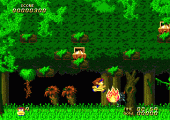
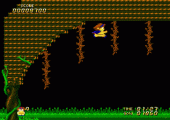
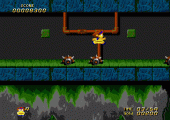
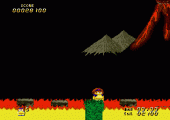
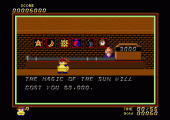
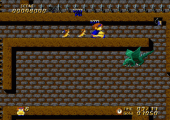
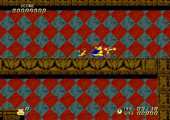
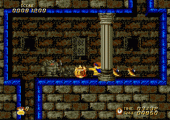
Fun little game. It’s unforgiving but definitely not [I]that[/I] hard — especially given the wealth of continues/lives and the fact that you pick up more or less where you left off, and it took me only a few attempts to beat it. The final boss seems impenetrable, but once you get the right pattern he’s pretty straightforward.
Most important of all, the game is almost totally free of cheapness, which is so crucial in this kind of game. (One exception: an enemy that spawns right on top of you in Stage 2.) Though it can get a little frustrating, every time I lost a life, I couldn’t blame anything but my own slow reflexes or poor judgment.
I’d give it 8/10. It doesn’t quite reach the inspired level of some other action-platformers, but it’s still a well-crafted game that feels good to play.